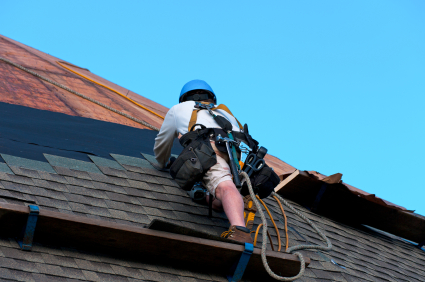Your Responsibilities When Working at Heights
Whether you’re working on a kick stool, ladder or crane, you have certain responsibilities when working above ground level. These responsibilities apply whether you’re working a couple of feet off the floor or even hundreds of metres off the floor.
So, what are the main responsibilities of employers, duty holders and employees when it comes to working above ground level? How can you stay safe and protect others?

Employer Responsibilities
Employers must do all that is reasonably practicable to prevent anyone from falling when working at height. This is the overriding principle. To achieve this, they must:
Properly plan work at height.
Take account of weather conditions before anyone works at height.
Ensure all employees who work at height are properly trained and competent.
Provide a safe location for all work at height.
Ensure equipment for work at height is appropriately inspected.
Control risks surrounding fragile surfaces and potential falling objects.
Employee Responsibilities
As with all other regulations (relating to manual handling, DSE and slips and trips, for example), employees also have responsibilities. UK regulations dictate that employees or those working under someone else’s control must:
Report any safety hazard to the relevant person.
Use the equipment supplied (including safety devices) properly.
Follow any recommended training and instructions – unless they believe it to be unsafe, in which case they must seek further instruction before continuing.
Duty Holder Responsibilities
Meanwhile, duty holders must follow these protocols if they must work at height.
Duty holders must:
Keep work at height to a minimum.
Properly plan work at height.
Ensure that everyone who works at height is appropriately supervised.
Make sure that those who work at height are trained and competent, able to complete the task safely and able to erect, use, dismantle or operate the selected access equipment appropriately.
If you are still undergoing training, you should be supervised by a fully trained and competent person.
Duty holders should be aware that most accident cases happen due to poor management control rather than equipment failure. Watch out for these failures in your workplace.
Failure to:
Recognise a problem.
Provide safe systems of work.
Ensure that everyone involved follows safe systems of work.
Provide adequate information, instruction, training or supervision.
Use appropriate equipment.
Provide safe equipment.
ETD’s Falls Prevention Course
For more information about your responsibilities when working from height, you can complete ETD’s online Falls Prevention Course . Follow these five simple steps to get started.
· Create a free company account or single user account, selecting the £12+ VAT payment scheme.
· Purchase your user accounts using the online Elavon platform.
· For company accounts, create your user accounts (using unique usernames) and “activate” each user by pressing the “activate” button.
· Purchase your online training by selecting the courses that you require. Ticking a course will instantly assign it to the user’s account.
· Once the courses have been assigned, single users can access the course under “my courses”. Company users can log into their account, go to “my courses” and start the training.
If you require any assistance with the online training, then please contact our support team , who will be happy to help.









